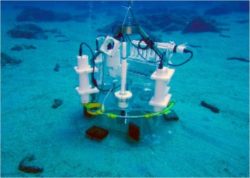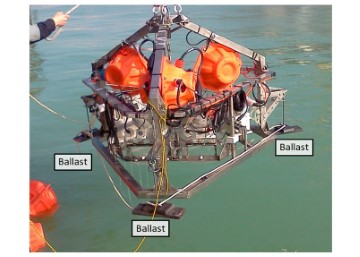The Amerigo Lander: a novel underwater device to measure human oceanic impacts

 It is no secret that humans are heavily impacting oceans. Measuring these impacts, however, is extremely difficult. Not only are the oceans vast but incredibly deep with the ocean floor at least 6000m down in many locations. Precise measurements of biogeochemical and ecological processes at these depths is technologically hard.
It is no secret that humans are heavily impacting oceans. Measuring these impacts, however, is extremely difficult. Not only are the oceans vast but incredibly deep with the ocean floor at least 6000m down in many locations. Precise measurements of biogeochemical and ecological processes at these depths is technologically hard.
An Italian research group from Consiglio Nazionale delle Ricerche (CNR) have made these measurements just a little easier with the development of two underwater devices. Through these devices, the marine scientists are advancing our understanding of human impacts on biogeochemical processes in the oceans.
The Amerigo Lander is a tripod, or triangular shaped, device that is around 2 metres wide and 1.5 metres high. The Amerigo Lander is designed to measure parameters such as pH, dissolved oxygen and dissolved methane to ocean depths of 6000 metres.
The Automatic Benthic Chamber (CBA) is the second underwater device that is designed to measure parameters to a shallow depth of 200 metres. The CBA can also be mounted onto the Amerigo Lander.
The Amerigo Lander and CBA are automated devices that are designed to minimise manual labour or measurements. The automation of the devices allows scientific researchers to focus on other tasks such as the collection of high-quality scientific data.
Technical details on the Amerigo Lander and CBA have been published in the international peer-reviewed journal, Sensors: https://doi.org/10.3390/s19112632
example sensors on the Amerigo Lander and CBA
 The Amerigo Lander and CBA are designed to support a variety of sensors and sample collection devices. For example, they can support the AMT deep sea pH electrode (ES-pH-DW) and the Franatech dissolve methane and temperature sensor (the METS).
The Amerigo Lander and CBA are designed to support a variety of sensors and sample collection devices. For example, they can support the AMT deep sea pH electrode (ES-pH-DW) and the Franatech dissolve methane and temperature sensor (the METS).
The AMT deep sea pH electrode is designed to continuously monitor pH to depths of 6000m. The pH electrode is designed via AMT’s unique microsensor technology with a response time of <1 second and accuracy of 0.01 pH units. The pH-combined sensor consists of a reference electrode and a pH sensitive glass electrode in one housing. The rapid responding, high accuracy pH electrode is ideal to characterise a pH transect, or gradient, of a rapidly falling device from the surface to the floor of the ocean.
The AMT deep sea dissolved oxygen sensor (ES-O2-DW) is another sensor which can potentially be installed on deep sea underwater devices. The ES-O2-DW oxygen sensor can measure dissolved oxygen to depths of 6000m. It is also a microsensor with rapid response times (~1 second) and high accuracy. The ES-O2-CTD model measures dissolved oxygen, conductivity (EC), temperature and depth simultaneously in a single sensing device.
The Franatech dissolved methane and temperature sensor (METS) can measure dissolved methane to concentrations of 50 nM (~0.003%). The high sensitivity of the METS, combined with its high accuracy, means it has been cited in over 200 scientific publications on deep sea projects. These include Seabird CTD devices, moorings, and AUV’s. Now the METS sensor has been incorporated into the Amerigo Lander to characterise biogeochemical processes related to dissolved methane.
deep sea sensors
further information
- Technical information on the Amerigo Lander and CBA
- The Institute for Marine Biology and Biotechnology Research (Istituto per le Risorse Biologiche e le Biotecnologie Marine, IRBIM) at Consiglio Nazionale delle Ricerche (CNR), Italy
- Dissolved methane and a Kon-Tiki tour
- Is the Great Barrier Reef moving to Tasmania?
